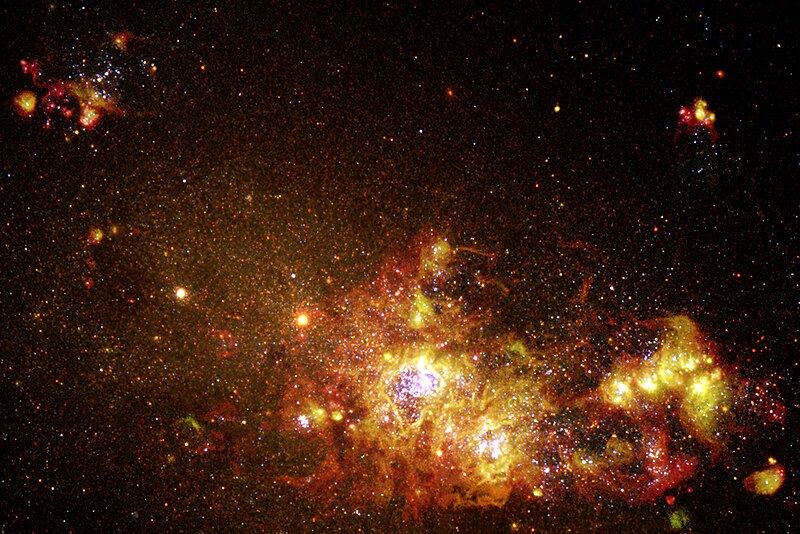Dosya:Fireworks of Star Formation Light Up a Galaxy - GPN-2000-000877.jpg

Bu önizlemenin boyutu: 800 × 534 piksel. Diğer çözünürlükler: 320 × 214 piksel | 640 × 427 piksel | 1.024 × 683 piksel | 1.280 × 854 piksel | 1.596 × 1.065 piksel.
Tam çözünürlük ((1.596 × 1.065 piksel, dosya boyutu: 1,67 MB, MIME tipi: image/jpeg))
Dosya geçmişi
Dosyanın herhangi bir zamandaki hâli için ilgili tarih/saat kısmına tıklayın.
| Tarih/Saat | Küçük resim | Boyutlar | Kullanıcı | Yorum | |
|---|---|---|---|---|---|
| güncel | 00.41, 9 Nisan 2009 |  | 1.596 × 1.065 (1,67 MB) | BotMultichillT | {{Information |Description={{en|1=Located some 13 million light-years from Earth, NGC 4214 is currently forming clusters of new stars from its interstellar gas and dust. In this Hubble image, we can see a sequence of steps in the formation and evolution o |
Dosya kullanımı
Bu görüntü dosyasına bağlantısı olan sayfalar:
Küresel dosya kullanımı
Aşağıdaki diğer vikiler bu dosyayı kullanır:
- af.wikipedia.org üzerinde kullanımı
- ar.wikipedia.org üzerinde kullanımı
- ast.wikipedia.org üzerinde kullanımı
- el.wikipedia.org üzerinde kullanımı
- en.wikipedia.org üzerinde kullanımı
- es.wikipedia.org üzerinde kullanımı
- eu.wikipedia.org üzerinde kullanımı
- fr.wikipedia.org üzerinde kullanımı
- hr.wikipedia.org üzerinde kullanımı
- id.wikipedia.org üzerinde kullanımı
- it.wikipedia.org üzerinde kullanımı
- ja.wikipedia.org üzerinde kullanımı
- ko.wikipedia.org üzerinde kullanımı
- lb.wikipedia.org üzerinde kullanımı
- mk.wikipedia.org üzerinde kullanımı
- nl.wikipedia.org üzerinde kullanımı
- no.wikipedia.org üzerinde kullanımı
- pl.wikipedia.org üzerinde kullanımı
- pt.wikipedia.org üzerinde kullanımı
- ro.wikipedia.org üzerinde kullanımı
- si.wikipedia.org üzerinde kullanımı
- sk.wikipedia.org üzerinde kullanımı
- sr.wikipedia.org üzerinde kullanımı
- uk.wikipedia.org üzerinde kullanımı
- vi.wikipedia.org üzerinde kullanımı

